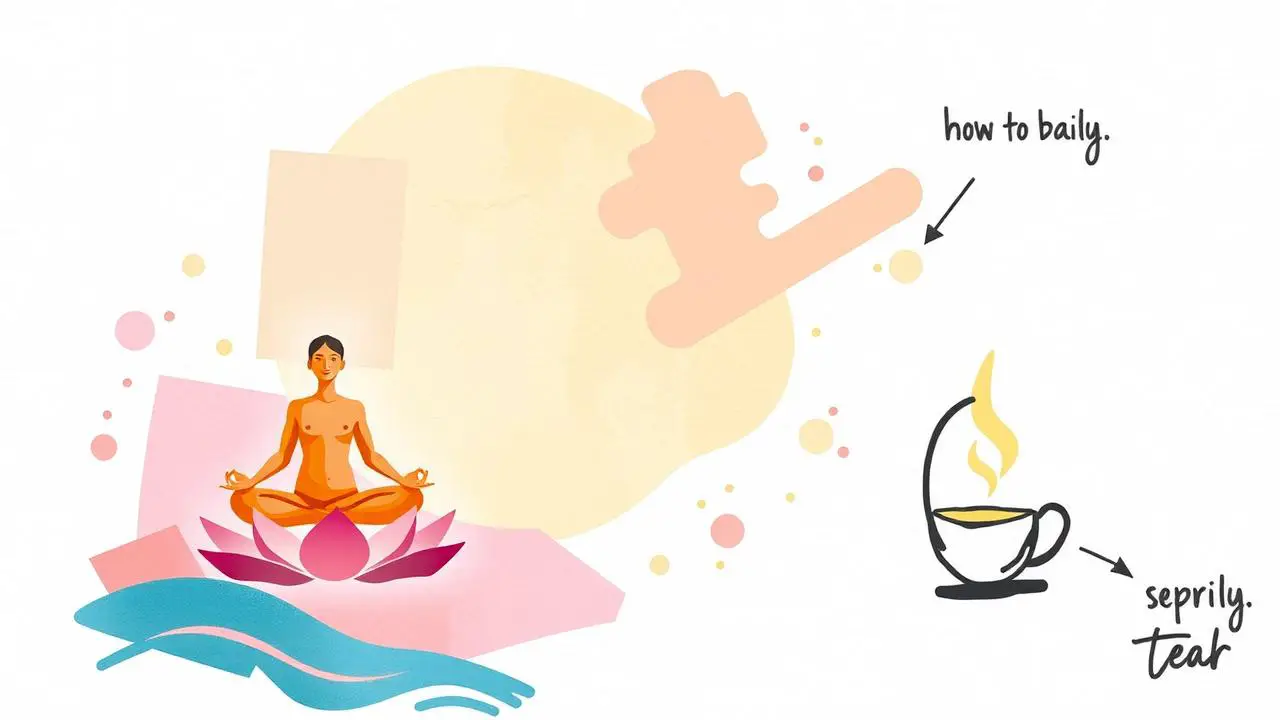Mindfulness meditation is a practice that has been around for centuries and is gaining more and more popularity in the modern world. But what is the goal of mindfulness meditation? Is it a way to relax and de-stress, or is there something more to it?
The goal of mindfulness meditation is to help achieve a mental state in which one can attain inner peace and clarity, resulting in better concentration, greater self-awareness, and improved engagement with life. Mindfulness meditation helps to reduce stress and anxiety, as well as promote physical healing through its various guided practices.
For many people, mindfulness meditation can be a life-changing experience, offering a host of physical, emotional, and spiritual benefits. To “tap into” these benefits, one must understand the goal of mindfulness meditation and how to practice it correctly.
In this article, we’ll explore the concept of mindfulness meditation and answer the question: what is the goal of mindfulness meditation?
We’ll also look at some of the practical ways that it can be used to improve your life – a life-changing journey if you will – and I’ll provide tips on how to make the most of it.
Definition Of Mindfulness Meditation
Before we explore the goal, let’s first clarify that mindfulness meditation is a practice of focusing on the present moment with non-judgmental awareness.
Practitioners strive to observe their thoughts and feelings without getting caught up in them. This is a way of tuning into the body and mind and connecting with the experience of being alive.
Through the practice of mindfulness meditation, we can gain a greater understanding of ourselves and develop skills to manage difficult emotions.
It is a way of cultivating stability and clarity, even in the midst of life’s chaos.
By developing this deep awareness and stillness, we open ourselves up to a new kind of freedom. We learn to let go of our attachment to our thoughts and feelings and to simply observe them as they come and go.
With this newfound freedom, we can move through life with more ease and compassion. Taking the next stride forward, let’s explore the origins of mindfulness meditation.
Origins Of Mindfulness Meditation
Mindfulness meditation has its roots in ancient Eastern spiritual traditions, with the earliest known mentions of this practice dating back to Hindu and Buddhist texts from around 500 BCE.
The philosophy of mindfulness meditation centers on the idea that one can achieve peace and understanding in life by focusing on the present moment and being aware of one’s thoughts and feelings.
This practice has been adapted and used in different ways throughout history, with the modern version of mindfulness meditation being popularized in the 1970s.
Since then, mindfulness meditation has become very popular all over the world. Many people use it to improve their mental, physical, and emotional health.
From its ancient roots to its modern application, mindfulness meditation has been a powerful tool for self-discovery and growth. In our next section, we’ll explore the many benefits of this practice.
Benefits Of Mindfulness Meditation
Now that we understand the origins of mindfulness meditation, let’s explore the many benefits that come from practicing it.
Through mindfulness meditation, we can learn to live in the present moment, allowing us to become more aware of our thoughts and feelings, and how they affect our behavior.
This increased awareness can help us to become more mindful of our actions and can lead to healthier relationships with ourselves and with others.
At the same time, mindfulness meditation can help us to reduce stress and anxiety, as we learn to observe our thoughts and feelings without judgement.
When we become aware of the intention behind our thoughts and feelings, we can take a step back and decide how we want to react. This can help us to navigate difficult moments with more clarity and understanding.
Mindfulness meditation can also help us to cultivate a sense of inner peace and balance. By focusing on the present moment and being mindful of our breath, we can create a sense of calm and relaxation.
This can help to reduce feelings of restlessness and irritability, and can even improve our overall physical health.
Overall, mindfulness meditation can be a powerful tool for cultivating a greater sense of wellbeing and contentment.
By training our minds to observe and accept the present moment, we can develop a deep understanding of ourselves, and create a more peaceful and fulfilling life.
Next up, let’s look at some of the techniques to achieve mindfulness.
Techniques To Achieve Mindfulness
Mindfulness meditation is an incredibly powerful tool for achieving mental clarity and emotional balance.
To get the most out of your practice, it’s important to understand the techniques used to achieve mindfulness. Here are four key techniques to keep in mind:
- Awareness: Mindfulness meditation involves paying close attention to your thoughts, feelings, and physical sensations. This allows you to become aware of your inner world and to observe your thoughts without judgment.
- Focus: You’ll want to give your full attention to the present moment and to whatever it is you’re focusing on. This could include your breath, a mantra, or a body part.
- Acceptance: Mindfulness meditation involves accepting and acknowledging your thoughts and feelings without resistance. This will help you to be in harmony with your inner experience and to become more at ease with yourself.
- Non-attachment: Mindfulness meditation encourages a non-judgmental attitude towards your thoughts and feelings. This will help you to let go of any attachment to those thoughts, allowing you to experience the present moment more fully.
By utilizing these techniques, you can begin to gain a greater understanding of yourself and the world around you. From this understanding, you can move on to the next stage of your journey: working with difficult emotions.

Working With Difficult Emotions
Meditation can be a complex process to achieve mindfulness, and it’s likely that at some point during your practice, you will experience difficult emotions.
It’s natural to want to avoid these emotions, but this can be counterproductive. Instead, you’ll want to face them head-on and learn to work with them in order to progress further on your journey to mindfulness.
The goal is not to ignore or push away these emotions, but to accept them and explore them. When you can recognize and be honest about how you’re feeling, it can help to bring clarity and understanding to your practice.
It will also help to create space for the uncomfortable emotions to be present in your life without you having to be consumed by them.
Forming a new habit can take time, see How Long Does It Take To Form A Habit?
Rather than succumbing to the emotions and being swept away, your aim should be to stay present and observe them without judgement.
This can help to give you a better understanding of why you feel the way you do, as well as how to manage the emotions in a constructive way.
Having an awareness of how you respond to difficult emotions can be a powerful tool that will help you to navigate through them with more confidence and courage.
By understanding that the goal of mindfulness meditation is to work with difficult emotions, you can start to understand your relationship with your emotions better.
Now that you have a better understanding of how to work with difficult emotions, the next step in your mindfulness journey will likely be taken.
To do this, you’ll want to find a mindfulness meditation teacher who can help to guide and support you as you continue on your practice.
How To Find A Mindfulness Meditation Teacher
Mindfulness meditation is a powerful practice that can help to bring greater awareness and understanding to your emotions. If you’re looking to find a teacher to help you on your journey, there are a few different ways to go about it.
First, you can look for a local meditation class or group. Many cities and towns have meditation centers and practitioners who offer group classes or individual sessions.
If this is your preferred option, then it’s best to do your research and find a teacher who resonates with you.
Reading reviews and speaking with other students can help you get a better understanding of the instructor’s teaching style and philosophy.
Another great way to find a teacher is to take an online course. There are plenty of websites, apps, and online platforms that offer guided meditation classes.
Through these courses, you can gain access to experienced teachers who can provide you with the tools and instruction you need to practice mindfulness.
Lastly, you can also look for a personal meditation coach. Working one-on-one with a meditation teacher can be a great way to deepen your practice.
A good teacher will be able to guide you through each step of the process and offer tailored advice to help you reach your goals.
No matter which route you take, the most important thing is to find a teacher who makes you feel safe, supported, and respected.
With the right teacher, you can begin to explore the depths of mindfulness meditation and unlock its many benefits.
Without a doubt, intention plays a vital role in mindfulness.
The Role Of Intention In Mindfulness
When it comes to mindfulness meditation, setting an intention is a crucial step in your practice.
An intention is simply a statement of what you would like to achieve from your practice. It can be as simple as taking a few moments to pause, or as complex as cultivating a deeper understanding of the self.
Your intention serves as a guide throughout your practice, helping to keep you focused on your goals and objectives. It can also be used to help assess your progress and any challenges that may arise. Having an intention can help you to stay grounded in the present moment and make the most of your practice.
With this in mind, it’s important to assess your intention regularly to make sure that it’s still relevant and useful.
If you find yourself feeling overwhelmed or distracted during your practice, it can help to bring yourself back to the present moment for a few moments.
Mindfulness meditation is a powerful tool that can be used to cultivate awareness and understanding of the self.
By setting a clear intention, we’re able to make the most of our practice and reap the benefits that come with it.
As you embark on your mindfulness journey, take the time to set an intention that resonates with you, and you’ll be sure to see the results.
Now, let’s take a look at some of the common challenges that come with a mindfulness meditation practice.
Common Challenges With Mindfulness Meditation
While mindfulness meditation is a powerful tool for cultivating a greater awareness of your thoughts, emotions, and actions, it does come with some challenges.
One of the most common difficulties’ people face is staying focused on the present moment. It can be easy to get distracted by your own thoughts or outside noises, but with a little practice, you can bring your attention back to the present.
Another issue is that during meditation, you may experience unpleasant emotions or memories, and it can be difficult to stay with them without wanting to avoid them.
It’s important to remember that this is a natural part of the process and that it’s ok to acknowledge and accept these feelings as they come.
Finally, one of the biggest hurdles to overcome is finding time to meditate regularly. With the demands of modern life, it can be hard to make space for mindfulness practice, but even a few minutes a day can make a big difference and help you to feel more centered.
Now that you’ve learned how to practice mindfulness meditation, it’s time to move onto the next phase of your practice. Your daily life should include mindfulness.
How To Incorporate Mindfulness Into Daily Life
Now that you understand the common challenges associated with mindfulness meditation, let’s take a look at how to incorporate this practice into your daily life. To help kickstart your journey, the key is to start small and commit to taking consistent action.
One metaphor I like to use when thinking about mindfulness is that of a garden. If you want to have a beautiful, thriving garden, it’s not enough to simply plant a few seeds and wait for them to grow. You have to continually tend to the garden, nurturing it with water and sunlight, and removing any weeds that threaten to take over.

The same is true with mindfulness. If you want to reap the rewards of this practice, you have to make it part of your lifestyle—a daily habit that you commit to and practice. This could be as simple as taking a few moments each day to sit in silence, or taking a mindful walk around your neighbourhood.
By cultivating this habit in your daily life, you’ll be able to reap the benefits of mindfulness meditation. Not only will it help you to become more present and aware, but it can also help to reduce stress and increase your overall happiness. With a consistent practice, you’ll soon find yourself living a more mindful life.
Now that we’ve explored how to incorporate mindfulness into daily life, let’s take a closer look at the current research surrounding this practice.
Current Research On Mindfulness Meditation
Mindfulness meditation has been gaining popularity in recent years, and with good reason. Studies have shown that incorporating mindfulness into your everyday life can have far-reaching benefits. It can improve your physical and mental health, focus and concentration, and more.
But what exactly is the goal of mindfulness meditation?
Current research suggests that the main purpose of mindfulness meditation is to help increase awareness and understanding of the present moment.
This means becoming more aware of your thoughts, feelings, and bodily sensations, without getting caught up in judging or analyzing them. It also involves accepting them without trying to change them.
With practice, mindfulness meditation can help to make us more attentive and aware of our inner state, as well as the external environment. It can also help us to become more aware of our automatic reactions to various circumstances.
This can be incredibly beneficial for developing a healthier relationship with ourselves and our environment.
Mindfulness meditation can also help to cultivate a sense of inner peace and clarity. Studies have shown that mindfulness meditation can help reduce stress, anxiety, and even depression. It can also help to increase self-compassion, self-acceptance, and self-awareness.
The goal of mindfulness meditation is to increase our understanding of ourselves and our environment and to help us become more aware of the present moment.
With regular practice, it can be a powerful tool for improving our physical and mental health and well-being.
Frequently Asked Questions
How Long Does It Take To Start Feeling The Benefits Of Mindfulness?
Mindfulness meditation is a practice that is becoming increasingly popular as people seek to connect with their inner selves and find peace and balance in their lives. But how long does it take to start feeling the benefits of mindfulness?
The answer to this question lies in the individual. Every person is on their own journey and no two experiences with mindfulness will be the same. That being said, the power of mindfulness meditation lies in its ability to be practiced and experienced in the present moment.
The beauty of mindfulness is that it can be practiced in any moment, and it is through the regular practice of being present that we can start to feel the benefits of mindfulness. Through regular practice, we can begin to experience a greater sense of clarity and connection with our inner selves. We can start to develop a greater knowledge and understanding of our thoughts, feelings, and behaviours.
Often, it is through the practice of mindfulness meditation that we can start to become aware of our emotions. This allows us to better control how we respond to situations.
With continued practice, we can start to become aware of our behaviours, and begin to make changes to those that no longer serve us.
Through the power of mindfulness meditation, we can start to experience a greater sense of calm and clarity in our lives.
This is the ultimate goal of mindfulness meditation: to develop a deep connection with ourselves and to live our lives in a more conscious and mindful way.
This can take time and dedication, but it is well worth the effort, as the rewards of mindfulness are truly life-changing.
Is Mindfulness Beneficial For Children?
When it comes to mindfulness meditation and its potential beneficial effects, it’s important to consider how it may impact children.
Mindfulness has increasingly been used for children in a variety of contexts, including education, health, and mental health.
Studies have found that mindfulness meditation can help children and adolescents control their emotions. It can also help them deal with stress and anxiety.
Mindfulness can also be a useful tool for addressing behavior problems in children, such as impulsivity and aggression. Additionally, mindfulness can help to improve focus and concentration in children, allowing them to better engage in tasks.
However, it’s important to note that there may be some limitations when it comes to mindfulness and children. For example, the research is still not clear on the long-term effects of mindfulness practice in children. Additionally, there may be some children who find the practice of mindfulness to be difficult or uncomfortable.
TIP: When it comes to mindfulness meditation and children, it’s important to consider the individual needs of each child. Mindfulness is not a one-size-fits-all practice, and it’s important before introducing it to a child that they are comfortable with it.
Are There Any Risks Associated With Mindfulness Meditation?
When it comes to mindfulness meditation, it’s important to consider any potential risks associated with the practice. While mindfulness meditation can be incredibly beneficial for children, there are some possible risks that parents should be aware of.
One potential risk is that some children may find it difficult to stay focused and present during the meditation.
The practice of mindfulness requires the person to be aware of the present moment and mentally present. This can be difficult for young children to do.
If their minds wander, they may become easily frustrated and overwhelmed, which could lead to them feeling worse instead of better.
Another potential risk is that mindfulness meditation could trigger difficult emotions. The practice of mindfulness encourages individuals to observe their thoughts and feelings without judgement, which can be a challenge for young children.
If they are not able to do this, they could become overwhelmed by their emotions, which could be distressing.
Finally, there is the potential risk of misunderstanding the practice. If children do not learn mindfulness meditation properly, they may not understand what is expected of them, and they may not enjoy the practice.
It’s important for parents to be aware of these potential risks before beginning a mindfulness meditation practice with their children.
With proper guidance and instruction, however, mindfulness meditation can be a wonderful way for children to learn to manage their emotions and cultivate a sense of inner peace.
The key is to be mindful of any potential risks and make sure your child is comfortable and safe as they explore the practice.
Is It Necessary To Have A Teacher In Order To Practice Mindfulness?
One of the most common questions that people have when it comes to mindfulness meditation is whether or not it’s necessary to have a teacher in order to practice it.
The answer is no. If you understand the basic techniques of meditation and how to focus on the present moment, you can practice mindfulness meditation on your own.
However, having a teacher or guide can be very helpful in improving your practice. It can also make it easier for you to follow your practice.
In fact, according to a National Center for Complementary and Integrative Health survey, nearly two-thirds of people who practice mindfulness do so with a guide or teacher.
Having an experienced teacher to offer support and guidance can help you understand how to do the practice right. You need to pay attention to your breath.
They can also offer advice on how to work with any difficulties that may arise during your practice, such as feelings of anxiety or restlessness.
It’s important to remember that mindfulness meditation isn’t just about trying to clear your mind and sitting quietly. It’s about developing a deeper understanding of yourself and your feelings.
Having a teacher or guide can help to ensure that you’re doing the practice correctly and staying mindful of your breath and body.
Ultimately, it’s up to you to decide if having a teacher is necessary or beneficial for your mindfulness practice.
How Often Should I Practice Mindfulness To See Results?
The goal of mindfulness meditation is to help you become more aware and connected to your own thoughts and feelings. While there is no set answer as to how often you should practice mindfulness to see results, the key is to be consistent. For many people, practicing mindfulness meditation a few times a week is enough to experience the benefits. Here are a few tips to help you get started:
- Start small – Begin with five minutes of mindfulness meditation each day. As you become more comfortable, you can extend your practice to longer sessions.
- Set a schedule – Choose a specific time of day to practice mindfulness. This will help to make it a part of your regular routine and make it easier to stick to.
- Change it up – Try different types of mindfulness meditation, such as walking meditation or yoga. This can help to keep your practice interesting and help you to stay focused.
- Be patient – Mindfulness meditation takes time and effort to master. Be patient with yourself and don’t get discouraged if you don’t see results right away. With practice, you can start to experience the positive effects of mindfulness.
Can Mindfulness Meditation Help Improve Sleep Quality?
Mindfulness meditation is an effective practice for enhancing restful sleep with meditation. Research has shown that it can help improve sleep quality by reducing stress and anxiety, promoting relaxation, and enhancing overall well-being. By incorporating mindfulness techniques into your bedtime routine, you may experience better sleep and wake up feeling more refreshed.
Conclusion
Mindfulness meditation is a powerful tool for cultivating inner peace, improving focus and concentration, and boosting self-awareness. It is a practice that can help us to become more present and aware of our thoughts and emotions, and to find balance and harmony in our lives.
By regular meditation, we can learn how to better manage our thoughts and emotions. We can also learn more about the world around us.
Through the practice of mindfulness meditation, we can create a greater sense of inner peace and well-being. Our goal is to live a life of greater balance and harmony.
Mindfulness meditation is an invaluable practice that can help us experience more joy and satisfaction in our lives and become more self-aware and present.
With dedication and commitment, it is possible to reach our goals and create a more meaningful and fulfilling life by living in harmony and balance.
Sources
https://www.semanticscholar.org/paper/dea7c4580493834414ccfdefd26834e679adebb4
https://www.semanticscholar.org/paper/d3faa027c9bb06aa9e3cf7090c7bbb09e2681d08
https://www.semanticscholar.org/paper/f5ada68df37d2807466ab5966f9aa4ed0c93c3aa
https://www.semanticscholar.org/paper/c8b9d3f601aa11ac4bf66e10245cf329d2800e5e
https://www.semanticscholar.org/paper/8898c51b542f5d7382b4fa675ab269ed1a015146
https://www.semanticscholar.org/paper/2a7b0cf7e78eccc4d91d0ec79589a4fe461c24df




